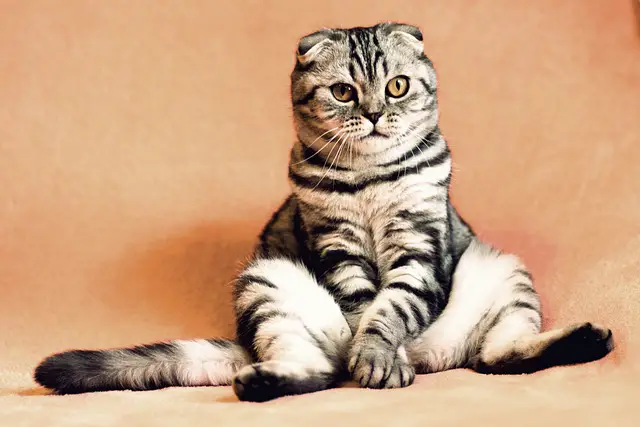Ever wondered when your fluffy little kitten will transform into a majestic adult cat? It’s a common curiosity among cat owners. Understanding the growth journey of your feline friend can provide valuable insights into their health and well-being. In this guide, we’ll delve into the stages of cat growth, from playful kittenhood to graceful adulthood, answering the burning question: When do cats stop growing?
Understanding Cat Growth: A Journey Through the Ages
From the moment they’re born, kittens embark on a remarkable journey of growth and development. During the first six months of life, kittens experience rapid growth, both physically and mentally. They open their eyes, take their first wobbly steps, and begin the crucial process of socialization.
As kittens enter adolescence, typically between six months and one year of age, they undergo an awkward growth spurt. This phase is marked by an increase in size and the development of sexual characteristics. Behavioral changes, such as heightened activity and independence, also become apparent.
Finally, cats reach adulthood, where they stabilize in size and behavior. But when exactly does this magical transformation occur?
When Do Cats Stop Growing? The Big Question Answered
While there’s no one-size-fits-all answer, most cats reach their full size by around one year of age. However, the timeline can vary depending on factors such as breed, genetics, nutrition, and overall health.
Smaller breeds tend to reach maturity faster than larger breeds, who may continue growing for up to two years or more. Genetics plays a significant role in determining a cat’s final size and development. Additionally, providing a balanced diet rich in essential nutrients is crucial for supporting healthy growth.
Monitoring Your Cat’s Growth: Keeping Tabs on Progress

As a devoted cat parent, staying vigilant about your furry friend’s growth and development is paramount. Establishing a routine of regular veterinary check-ups is crucial for evaluating their progress and promptly addressing any emerging concerns. During these appointments, your veterinarian can provide valuable insights into your cat’s growth trajectory and offer guidance on maintaining their overall health.
One essential aspect of monitoring your cat’s growth is keeping track of their weight and body condition score. Maintaining a healthy physique is essential for your cat’s well-being and longevity. By regularly weighing your cat and assessing their body condition, you can ensure they’re not underweight or overweight, both of which can have adverse effects on their health.
Furthermore, it’s essential to remain vigilant for any signs of growth abnormalities or health issues. Keep a keen eye out for indications such as stunted growth, disproportionate weight gain or loss, and unusual changes in behavior. These could be red flags signaling underlying health problems that require prompt attention.
Early detection and intervention are crucial in addressing potential health complications before they escalate. By staying proactive and attuned to your cat’s physical and behavioral cues, you can help safeguard their well-being and ensure they enjoy a happy, healthy life by your side. Remember, your vigilant monitoring and proactive care are instrumental in promoting your cat’s optimal growth and overall health.
FAQ: When Do Cats Stop Growing?
At what age do most cats stop growing?
Most cats stop growing around one year of age, but this can vary based on factors like breed and genetics.
Do all cats stop growing at the same time?
No, the timing of when cats stop growing can vary. Smaller breeds typically reach maturity faster than larger breeds, which may continue growing for up to two years or more.
How can I tell if my cat has stopped growing?
Signs that your cat has stopped growing include stabilized weight and body proportions, as well as the cessation of obvious physical changes associated with growth.
Can my cat’s growth be stunted?
Yes, factors such as malnutrition, health issues, or environmental stressors can potentially stunt a cat’s growth. Proper nutrition, veterinary care, and a nurturing environment are crucial for healthy development.
Should I be concerned if my cat seems smaller than average for its age?
It’s essential to consult with your veterinarian if you have concerns about your cat’s growth. While some variation in size is normal, consistently being significantly smaller than expected could indicate underlying health issues that need addressing.
Conclusion
In conclusion, understanding the growth stages of cats provides invaluable insights into their health and well-being. While most cats stop growing around one year of age, individual factors can influence their development timeline. By monitoring their growth, providing proper nutrition, and seeking veterinary care as needed, you can support your cat’s journey from playful kitten to beloved adult companion.
So, cherish every moment with your feline friend, whether they’re a tiny kitten or a fully grown cat. Each stage of their growth holds its own unique joys and experiences, making the journey all the more special. Here’s to a lifetime of love, laughter, and purrs with your furry companion!

Hello, this is Frank Swanson, the owner, and operator of Pet Info Hut. I created this website as a way to share my love of pets with the world. I have over 7 years of experience working with animals, and I have a passion for helping people care for their pets. I hope that you find my website useful and informative. Thanks for visiting!
